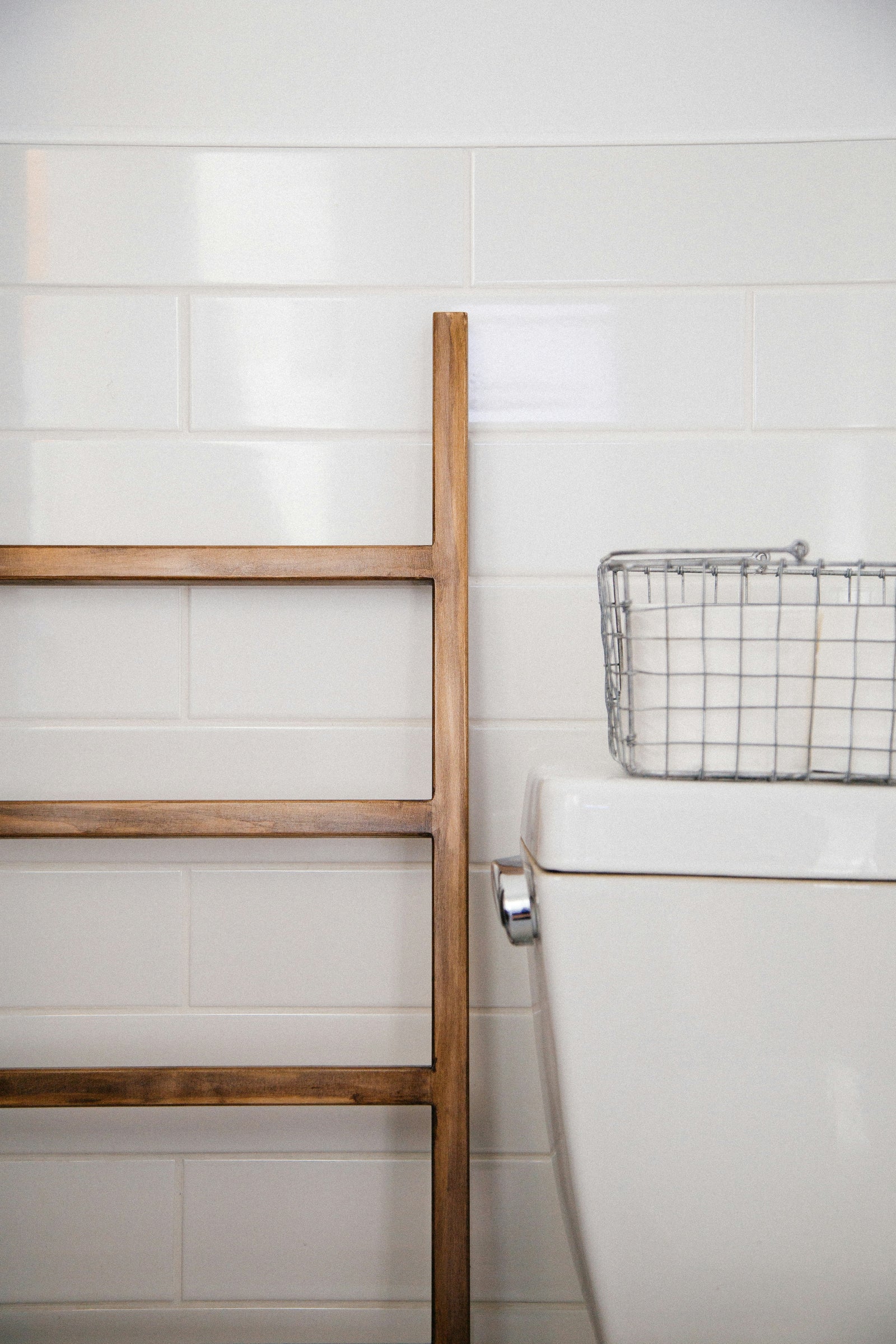Our Proven Methods For Getting Rid of Toilet Rings

Toilet rings are unsightly and can be frustrating to remove, especially if you have hard water.
Instead of reaching for harsh, bleach-based toilet bowl cleaners, try these proven methods for getting rid of toilet rings with zero harmful synthetic chemicals.
Our Methods for Getting Rid of a Pesky Toilet Bowl Ring
If you feel like a failure when you see toilet bowl rings coming back again and again, don’t—here’s why.
Most toilet bowl rings, especially those rust-colored ones that come back even with regular cleaning, are due to hard water mineral deposits mixing with bacteria.
Toilet rings can also be caused by:
- Bacteria: Specifically, a bacteria called Serratia marcescens creates those pink or reddish stains.
- General grime and/or mold: This creates orange, yellow, green, or brown stains.
- Lack of cleaning: Can create yellow stains.
Fortunately, there are simple ways to remove toilet bowl rings using human-safe cleaning products and DIY items you already have around the house.
1. Vinegar and Baking Soda
This popular DIY method works like a charm to remove toilet bowl rings and clean your toilet safely and naturally.
To use:
- Pour 1 cup of white vinegar or apple cider vinegar into the toilet bowl.
- Swish around with a brush.
- Dump 1 cup of baking soda into the toilet along with 1-2 more cups vinegar.
- Let dwell for 10-15 minutes.
- Scrub with a toilet brush to remove the stain.
- Flush.
This method works wonderfully for most types of toilet bowl rings. If any trace of stain remains, move on to option 3 in this list.
Related Reading:
- 12 Ways to Use Vinegar in Your Home
- Cleaning with Baking Soda (Sodium Bicarbonate): 12 Surprising Uses
2. Branch Basics Bathroom Solution and Oxygen Boost
Branch Basics' all-in-one, human-safe, earth-loving, and biodegradable cleaning system works on just about any type of cleaning job, including toilet bowl rings.
Here’s how to combine Branch Basics Bathroom Solution with hard-working Oxygen Boost to erase stubborn toilet bowl rings.
Method 1: Everyday toilet bowl rings
- Spray 2-3 sprays of Branch Basics Bathroom Solution in the toilet bowl. While you’re at it, spray it on the seat and around the base.
- Add 1 scoop Branch Basics Oxygen Boost on top of the Bathroom spray.
- Scrub the toilet bowl and wipe down the seats and base with Branch Basics Bathroom dilution.
- Let the combination dwell for 10-15 minutes.
- Scrub again to remove any remaining stain.
If this method does not remove all of the ring, move onto method 2.
Method 2: Stubborn toilet rings (overnight method)
- Before bed, spray 2-3 sprays Branch Basics Bathroom Solution around the toilet bowl.
- Sprinkle 1-2 scoops of Branch Basics Oxygen Boost around your toilet bowl.
- Let sit overnight.
- Scrub lightly in the morning, flush, and wipe down the seat and base using Branch Basics Bathroom Solution or your favorite human-safe bathroom cleaner.
If you see any trace of the stain, move on to the next step.
Related Reading: How to use Branch Basics Bathroom Cleaning Solution
3. Pumice Stone + Rubber Gloves
When vinegar, baking soda, and/or Branch Basics aren’t enough, a pumice stone will erase the rest of your stubborn toilet ring.
Before you begin, it is essential you choose the right pumice stone for the job!
Pumice stones made for skin or other purposes can damage your toilet. Plus, you don’t want to mix up your pumice stones.
Stones like the Pumie are the perfect grit for toilets and come with a handle for ease of use. You can also search “pumice stones for cleaning” for similar options.
To use:
- Clean the toilet using Branch Basics or your favorite natural cleaner.
- Put on your cleaning gloves.
- Gently scour the stain until it disappears using the pumice stone.
- Flush.
Expert tip: Mark your pumice stone using a permanent marker to avoid any mix-ups the next time you want to pumice your heels.
How to Prevent Toilet Bowl Rings from Returning
The simplest way to prevent toilet bowl rings is to clean all toilets in the home at least once a week, even those that aren’t used frequently.
The reason for cleaning less-used toilets as frequently is the lack of flushing can cause minerals to build up in the bowl, resulting in (you guessed it) those rusty-looking rings.
Speaking of minerals, if regular cleaning isn’t enough to prevent those hard water rings, we recommend investing in a water softener to reduce mineral buildup.
You can also try putting a cup of vinegar in the toilet a couple of times a week to prevent stains.
Regular flushing and keeping the lid closed are also helpful in preventing staining and grime/dust build-up.
We do not recommend using conventional disinfectant toilet bowl tablets or bleach-based cleaners as they can erode the toilet bowl finish over time.
Plus, they put off harmful fumes with every flush and are harmful to aquatic and septic systems.
Related reading: 5 Best Natural and Effective Toilet Bowl Cleaners.
Find Human-Safe Cleaning for Your Bathroom With Branch Basics
Making the switch from synthetic chemical bathroom cleaners and disinfectants to more natural alternatives can be a challenge.
After all, bathrooms are germy places and we want to ensure they are cleaned effectively.
This is where Branch Basics shines as a powerful and long-lasting yet safe bathroom cleaning system.
Our Bathroom and Streak-Free dilutions, made using Branch Basics all-in-one Concentrate, plus mineral-based Oxygen Boost is all you need to clean your bathroom from top to bottom with no harsh fumes, disinfectants, or harmful ingredients.
All Branch Basics products are Made Safe Certified, rated “1” on EWG’s Skin Deep, Leaping Bunny Certified, 100% biodegradable, and contain ingredients suitable for the most sensitive skin and people.
Whether you try Branch Basics for toilet rings or another of these methods, you can feel good knowing you’ve avoided using harmful chemicals to tackle a tough job.
To learn more about Branch Basics, see: How To Clean Your Bathroom Naturally With Branch Basics
To order Branch Basics simple, effective, and economical all-in-one cleaning system, check out our Starter Kits.

Marilee Nelson
Marilee Nelson is an Environmental Toxins expert who has spent nearly 30 years advocating for the chemically-sensitive and chronically-ill. She is a Board Certified Nutritionist, Certified Bau-Biologist and Bau-Biology Inspector and specializes in Food As Medicine. She has helped thousands of families and individuals identify, heal and recover from toxic exposures and is on a mission to revolutionize the way American families view their health.








